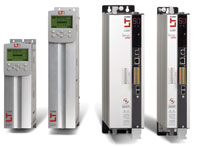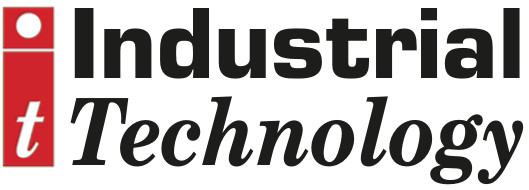
Posted to News on 21st Nov 2017, 00:00
What is the smallest speed increment on a servo motor?
Andrew Fallows of Motor Technology considers a frequently asked question on the issue of speed control and offers some advice to engineers.

When designing a drive system, particularly for critical applications, there are a number of issues that might seem self evident or obvious but are fundamental to achieving optimum performance, efficiency and accuracy. One such issue is speed control and determining the smallest speed increments that can be set on a servo motor. This is particularly relevant on applications where high precision speed control is critical – a common requirement on a wide range of modern industrial applications.
For instance, imagine you need a motor to drive a pump unit and provide a flow rate range from 0 to 500ml/min. Due to the pump’s design the torque required to drive it over the range is relatively constant but it might be necessary to adjust the flow rate down to 0.1ml/min. You first need to consider the type of motor and drive combination best suited to the demands of your application. Simple variable frequency drive (VFD) units quote speed control ranges down to as low as 1:40. Even more capable Open Loop Vector drives enable speed control ranges as low as 1:200.
The thing is, using either of these options won’t give you the necessary control, as the VFD can only run down to 1:40 of its speed range, giving a minimum flow rate of 12.5ml/min. And, in the case of the open loop vector drive the closest you could get would be 2.5ml/min. This is a crude example, but it makes the point. You could consider a flux vector drive which utilises a feedback device, typically an encoder, on the motor to achieve a speed control range of 1:1000. This would get you much closer to the desired control sensitivity, but even at 0.5ml/min we are still out by a factor of 5.
The speed control range of a servo system is not much of a concern as it is substantially better than the other options mentioned here. Due to the closed-loop control methods and the synchronous, permanent magnet characteristics of the motor, we can achieve full torque at standstill, and, as a rule of thumb, it is available up to 80% of the motors speed range with around 80% of the torque available up to the nominal speed of the motor. To put a figure on the speed control range, it is better than 1:5,000. A simple calculation,
500ml/min ÷ 5000 = 0.1ml/min
indicates that the servo solution will meet the demands of the application exactly. For this particular requirement it's the obvious choice, but you may want to consider that this is also the most costly option in terms of initial purchase cost. The servo system does have other advantages though, including high efficiency, that may well be worth the extra initial investment.
Considering the speed range of the drive system is only part of the issue. All servo drives are not the same and you need to be aware of the differences. One of the main issues is that the majority of drives available on the market, whether inverter or servo, are digital and all signals to the drive are converted to allow further processing. This conversion and its resulting data need to be understood before committing to a particular drive solution.
We have a required a flow rate range of 0 to 500ml/minute, with the speed demand selectable in increments of 0.1ml/min. Let us suppose that the speed is to be controlled over a ±10V analogue input. There are a couple of things that need to be addressed. We will make the assumption that the signal provided over the analogue input is pure analogue. If it is not, you’ll have the same considerations to make on the equipment generating the signal, as with the equipment receiving and processing the signal.
What do we mean by this? As an example, think back to the early days of radio, television, record players and even telephones. They were all pure analogue. The signal was only filtered, enhanced and amplified as it was passed from one component to another before it reached our eyes and ears. With analogue this occurs without the signal being chopped, manipulated, buffered overlaid and recompiled, as is the case with digital systems.
So how does this relate to our application? Well, we want to run the pump at up to 500ml per minute, in increments of 0.1ml per minute. Driving the pump input is a servo motor running at 3000rpm, through a 25:1 gearbox. The 3000rpm on the servo motor is therefore the factor ultimately controlling the flow rate of the pump. But to achieve the smallest increment of 0.1ml/min, the pump’s cam shaft needs to be turning at 0.024rpm, which is 0.6rpm on the motor. This, in turn, means that the analogue signal (±10VDC) needs to be stepped in less than 2mV increments. But can a servo drive handle such small variations? The short answer is yes, but it is dependent on the servo drive you are using. If the servo drive does not have a high resolution analogue input, then you could be in trouble. Let’s look at an example where the analogue input is 12 bit resolution. 12-bit resolution equates to 4,096 increments or approximately 2.5mV. So we don’t seem far off, but the first bit (the Most Significant Bit, or MSB) may be reserved for defining the direction (Positive or Negative), so our resolution is actually 11-bit for the speed portion of the signal or 5mV.
On this basis we need to select a drive with at least 14-bit (1.2mV) resolution to achieve the required minimum increment for the application. And remember, this also applies to the output of the equipment providing the demand signal in the first place. There may be work-rounds if your drive does not have an analogue input with a sufficiently fine resolution, such as using a digital interface (serial coms, fieldbus, etc). Some drives may offer the function of setting the input for a speed value without direction signal (for example 0-10V), if you are only driving the motor in one direction, as we are doing on this pumping application.






